#Fallow Deer Project
Text
so I've been identifying animals in camera trap photos from Texas over at https://www.zooniverse.org/projects/rowan-aspire/the-wild-southwest/classify and I cannot get over the guide's assertion that white-tailed deer are a "relatively small" species of deer. my friends they are Fucking Big. every time I get a photo come up with one I am like that is a huge fucking beast. what the fuck do you mean small species. you Americans just think anything that isnt a FUCKING MOOSE is small
#americans used to seeing moose vs britons used to seeing roe deer:#draco speaks#YES I just looked up the size and they are BIGGER THAN FALLOW DEER#THAT. IS NOT SMALL#the deer I see in my life are like a 50/50 between roe and fallow deer. maybe more on roe deer which are smol#anyway this project is cool love seeing the crested caracaras come up pretty often they're so majestic. just got my first bobcat picture to#it doesnt actually ask you to ID birds beyond 'bird' but I know most of them from my experience in costa rica & peru. so many vultures
4 notes
·
View notes
Photo
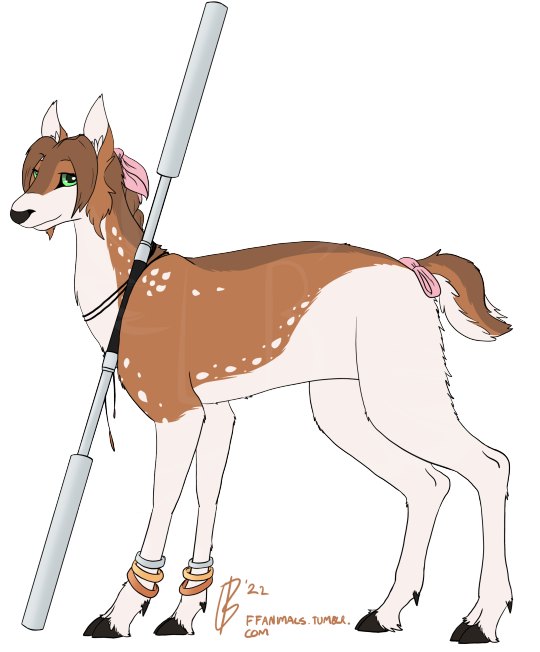
The Final Fantasy Animal Project #2 - Aerith Gainsborough
Species: Fallow deer
This was the most difficult design so far. I knew I wanted her to be a fallow deer, but I couldn’t quite get the patterning how it looked in my head. I think I still went OTT on the markings, but I like this.
#character design#video games#final fantasy#final fantasy vii#final fantasy vii remake#aerith gainsborough#fallow deer#animals#final fantasy animal project
5 notes
·
View notes
Text
Clanmew Expansion Pack: Deer & Co
A guide both to the Clan Culture concept of "deer" as a classification, how several species are perceived by Clan cats, as well as a glossary of Clanmew terms for their behavior.

[ID: A red deer stag stands proud next to the word, "KLEKA." Squirrelflight stands next to it, thinking the phrase, "sskif peeg-en-aayoo nomn." Roughly, "I want to eat that butt," directly, "Want: beacon-of-red stag I-will-eat"]
There are six species of "deer" (Kleka) that Clan cats see on a regular basis, five of them titanic giants that are too large to hunt as adults, and one of them just small enough to be targeted. A kleka is defined as, "a fast herbivore with long legs, ending in hard hooves."
All types of deer are big animals, with even the smallest being larger than a cat. They're most often seen in forest or open meadows, so because of this, they're typically associated with ThunderClan and WindClan.
The six species that Clan cats consider a "deer," listed with their human terms and Clanmew translation;
Red Deer (Cervus elaphus) = Aug (default) & Aayoo (stags during rut in late summer to early winter)
Fallow Deer (Dama dama) = Niaa (default) & Gruag (stags with full antlers)
Roe Deer (Capreolus capreolus) = Aeur
Muntjac (Muntiacus reevesi) = Maa'ar
Horse (Equus ferus caballus) = Ee'ee
Sheep (Ovis aries) = Baa (default) & Bing (bell wether)
"Hey hold on a minute!" You cry, "Those last two aren't deer!"
Go ahead! Try explaining that to a cat who doesn't even know what cladistics are! It eats plants, it has swiveling ears, it has long legs and hooves, and it runs fast. What else could such a creature be? KLEKA IS KLEKA.
(Note: The Chinese Water Deer and Sika Deer are also seen in England; however, not as far north as BB's modeled regions, ergo they are not represented by Base Clanmew.)
But for the sake of organization, this guide will only cover the 'true deer,' reds, fallows, roes, and muntjacs.
Before getting into specific detail about each species, first, here's a couple more general terms for various parts of these animals.
Antler = Grek
Branched, pronged horns that grow on male deer, bursting from bloody velvet. Muntjacs don't grow new antlers, but they never lose their 'velvet' either. Shed ones are valued for construction projects.
A doe is an antlerless (grekwaro) deer; a buck is an antlerful (grekwang) deer.
Velvet = Gawrek (Meat + Antler)
The meat that sheds off a fresh antler. Has been brought to my attention that this is full of estradiol, so, this is a very useful herb for Clan cats to use for feminine hormone treatment! For the velvet texture, "qefyyn", see here.
Horn = Greksh (Antler + Shell)
Seen exclusively in sheep, named for the snail shell-like shape and fact that, after death, the horns are hollow. A cow also has greksh, but this currently goes undiscovered.
NOTE: A generic horn, like the spines on a hedgehog or spikes on some insects, are called "kik"
Hoof = Kopka
The hard stone-claws on the end of a Klek's leg; also seen on two other special non-klek animals; hogs and cows.
Beacon = Peeg
When social deer are alarmed and running away, they follow the white flashes of each other's butts. Rabbits also have a beacon in their puffy tails! Clan cats assume that a horse's strange, hairy tail is just some sort of special beacon. It can also mean "rump," as in "rump roast."
Fawn = Myaa
A baby deer that hides in grass, and does not run when approached.
Yearling = Mween
A baby deer that follows its mother's side, and is now able to run if chased. The offspring of sheep and horses are already Mween just few minutes after their birth, though Clan cats don't encounter them on a frequent enough basis to have unique words for them. If used in a name, feel free to translate as 'foal' or 'lamb' at your discretion.
Herd = Klokok
A large group of deer, usually only seen during rut, or in the case of horses, behind fences. Mostly used in the presence of an aggressive stag of some sort who will attack a Clan cat who bothers his does.

[ID: A red deer stag and a red deer hind, with a field behind them]
We start off with the largest wild animal on this list, and the biggest creature that Clan cats see on a regular basis; the Red Deer.
The rut season is from late summer to early winter, and is the only time in the year that stags have 'antlers' which they use to fight other males for control of a herd. This is reflected in Clanmew; most of the year, all red deer are Aug, the sound of the 'bark' they use to communicate with each other.
ONLY when antlers start coming in do the stags become identified by the other term; Aayoo. Aayoo fill the forest with loud bellowing and clashing as they face off, with some Clan cats even taking the opportunity to watch these titans brawl just for entertainment.
Some Aayoo even have a distinct "Raofa" (lion mane) or "Gaofa" (cravat, tiger mane), which associates them with the legends of the Great Clans. But, eventually, the Aayoo sheds its weapons, and returns to being an Aug before the frost sets in.
They are far too large to be hunted, and most Clan cats would find it dishonorable to take their fawns if they are found hidden. They are a breathtaking and honored animal... though they do look delicious, if you ask Squirrelflight.
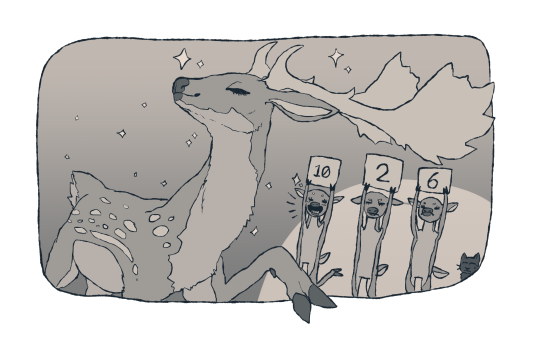
[ID: A fallow stag shows off in front of three does, who hold up signs with various ratings. Nightstar watches on, unimpressed.]
Up next is the deer considered the most beautiful by Clan cat standards; the Fallow Deer.
Just like reds, fallows have a "default" word for those that aren't sporting any antlers; "Niaa." The call of a fallow buck is best described in English as a 'belch,' in Clanmew, they call it "Gruag."
Their behavior is quite different from red deer; instead of one male who fights off any challengers for control of a harem, they have what we call a "lek" system. Gruag will gather in one part of the territory to fight and show off against many rivals, and the Niaa come to this place to watch and pick who they like best.
side note: this is a really rare system to see in mammals and fallow deer have been studied for how unique this behavior is
They come in lots of different colors, from white, to tawny, sometimes even being such a dark brown that they appear black. These colors are beloved, noted as if StarClan themselves like to practice painting on their coats. On top of this, they're the most numerous species of deer to see.
All of these things together gives fallow deer a reputation for being "dramatic" and "fancy" by Clan culture standards, less honorable than the powerful red deer but just as noble. However, this means that their fawns are not treated with the same careful reverence as those of reds, and snatched whenever they're found hiding.

[ID: A roe deer stands alone, menacingly, with a row of telephone poles behind it]
Roe deer act VERY differently from their larger cousins. A mostly solitary animal with only the presence of antlers and a smaller beacon marking a buck from a doe, Clanmew has only a single word for them; "Aeur." The sound of their very offputting 'alarm bark'.
Opportunists, roe deer will live just about anywhere they can find a small amount of forested cover, meaning they'll happily find room in just about any territory except WindClan's. In the Lake Territory, they're particularly fond of the places where fallows and reds don't have enough space, such as the SkyClan conifer patch.
Clan cats find them deeply unsettling. Though smaller than reds and fallows, a roe deer is still as large as three warriors stacked on top of each other. Males immediately re-grow their dagger-like horns as soon as the old ones fall out, never fully returning to the 'default' form. And, worst of all...
They have the same crepuscular behavior as cats do, active at dawn and dusk. Females typically raise two fawns and manage their own territories, much like a rogue. They even create simple nests which they sleep in every night.
The Clans try to keep away from them, unless they're truly starving. There are tales that those who don't believe in StarClan are doomed to exist as roe deer in their afterlives.
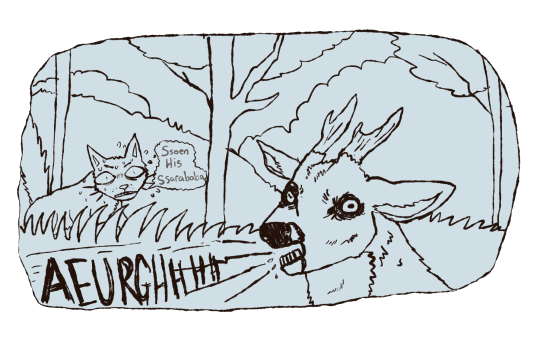
[ID: A warrior is unsettled by a barking roe deer. It says, "ssoen his ssarababa," roughly, "holy shit," directly, "stars, shit they-say"]

[ID: A muntjac walking through marshland, being stalked by Stumptail]
Probably not an animal you were expecting to see in England, huh? The Reeves' Muntjac has been an invasive problem since the 20th century, rapidly spreading across the island. Like roe deer, males have antlers while females do not, but there aren't enough differences in behavior for Clan cats to have a dedicated word for the two forms.
So, a muntjac is simply known as a "Maa'ar."
These little buggers will eat just about any plant matter, which can make them quite destructive. Bark, grass, fruits, leaves, anything. Slightly larger than a fox, their only predator is Clan cats, who consider them to be a prized quarry. Their skin creates some of the highest quality leather in all the territories, and their horns and 'tusks' are valued for decorations.
Though solitary, they can still put up a fight. Those fangs and horns aren't just for show; they can gore and kill an unwise hunter, and if that fails, they're much faster than their cutesy little loaf-shape suggests.
They're unique for many reasons, but especially in that they like wet areas. So, unlike the other types of deer, the muntjac is most often seen by ShadowClan and RiverClan. Since RiverClan doesn't have the same taste for mammalian meat that ShadowClan does, in the Lake territory, sometimes muntjac hunting rights cause conflict between the two neighbors.
169 notes
·
View notes
Text
Solstice / GhostSoap
Explicit | 5200+ words | omegaverse
Preparations for winter solstice begin on the equinox.
With fruits sweetened by the summer sun and meats fattened by the abundance brought by spring, Ghost has always preferred this autumnal balance of night and day.
It’s been years since his last run; too busy with the throes of battle and war to consider ones of ferocious passion. But this banquet of divine foods is something he has missed.
He is not one for the summer, reluctant to remove his shirt to let his skin burn, blister, and peel. Instead, he adores this warming, golden light.
The leaves of the forest rustle in the wind, in the midst of hurtling towards their beautiful, ochre death, and Ghost bites into raw flesh of a fallow deer. It is the first feast of this mating season, to strengthen the bodies of Alphas, preparing them for the barbarism of seeking out and plundering the Omega they desire. Preparing them to fight to the death for the one they wish to possess for their mating trysts.
Tensions are low on the equinox, the camaraderie of this run joining them all as one, but they mount as the day is eaten up a little more by the night with each passing moonrise. Soon, fangs are bared and flesh torn, and Ghost relishes in this primal violence.
The Alpha pack fractures and splits, hunting bucks and each other, displaying dominance as their bodies command them to. Soon, there will be no rational mind left.
Only instinct.
continue:
#ghost x soap#ghostsoap#soapghost#fic#omegaverse#predator prey#fanfic#simon ghost riley#john soap mactavish#simon ghost riley x john soap mactavish#lo writes#soap x ghost
34 notes
·
View notes
Text
Hello!


About Me:
⭑ I'm just here to draw occasionally and look at cool stuff
⭑ I do worldbuilding when I have time & love speculative biology

⭑ Therio/Kin Types-
Cat-Hearted (All felines) [Psychological-Somatic]
Gryphonkin (Northern Hawk Owl) [Psychological]
Hippocerfkin (Roe + Fallow Deer) [Psychological]
Stormcosm ("Cosm"-Definition) [Psychological-Spiritual?]
⭑ Other:
I have a Hare Paratype and Suliformes are my Synpath
⭑ Hearthome(s)
Sub-arctic Heath/Moorland (Hippocerf & Gryphon)
Sub-arctic Taiga & Evergreen Forest (Gryphon)

My Tags:
(I'll need to update this a lot)
Zeph squawks- whatever I feel like
my art- says it on the tin
Bird Stuff- birds/gryphons (very wide application)
felid follies- cat-hearted stuff
the sky above- stormcosm things
ungulates- hippocerf nonsense
sulid sillyness- suliforme synpath stuff
tall ears- hare paratype things
homelike- Reminds me of my hearthome in some way
(O)Pinions- I have OPINIONS on this (usually good ones)
Riadophaes- my main planet in my Worldbuilding project


6 notes
·
View notes
Text

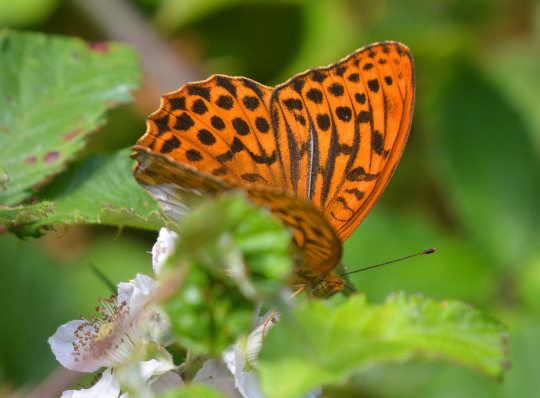
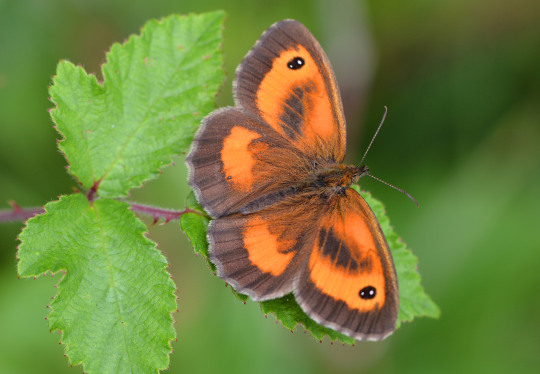


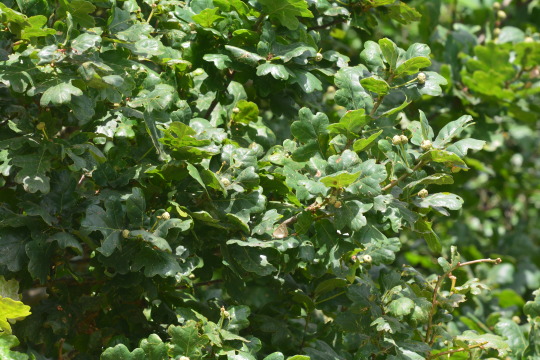
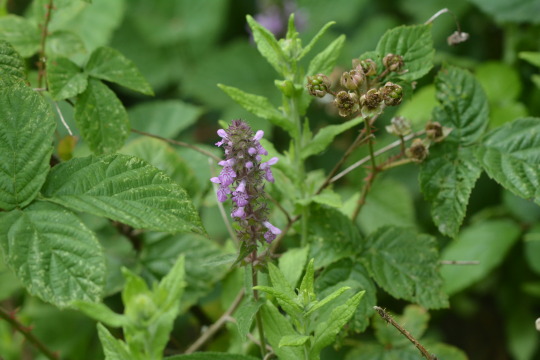



02/07/2023-An amazing day at Knepp
Flora and fauna photos taken in this set: 1. Some inspirational White Storks, I was euphoric to see these mesmerising birds flying right from the start of the visit at the walker's car park and with around five in the air at one point, on nests, with young, feeding young, uniquely for this annual visit for us on the ground in grass and hear their distinctive and joyful clacking sounds. It still feels quite surreal to see these birds in the British countryside and yet they feel so in place, what amazing work this project has done I loved the views we got of them today. 2. Silver-washed Fritillary, I saw my first of the year of these golden butterflies the species that got me into butterflies, a bonus one to the usual key butterflies here that I hoped we might see. 3. Gatekeeper, a key one seen on a butterfly bonanza. 4. Purple Emperor, I felt so honoured and lucky that we saw possibly as many as twenty of these gigantic and extremely prepossessing butterflies today the other main species alongside White Stork we came for and what first attracted us here. We got exhilarating and exquisite views of them dancing along the tree tops, fighting and landed. 5. Common toadflax in the sun, the first I'd seen on a walk this year a flower I like and have seen here before. 6. Purple Hairstreak, it was wonderful to see many of these astonishing butterflies well too capping off an extraordinary week I've had for seeing them the best week I've had for them in terms of how many I've seen at Lakeside and here. 7. Marsh woundwort, another flower seen well. 8. A White-letter Hairstreak, we had hoped to see one and all thanks to a kind man (and his lovely dog) that we got talking to who alerted us to them in an elm we saw some. A butterfly we didn't see at all last year, it was a strong addition to the day and year. What a moment to watch them. 9. A lovely Mistle Thrush I enjoyed seeing. 10. Fallow Deers, always great to see here.
Another hoped for addition to the core targets we saw was White Admiral, the four butterfly year ticks (this, White-letter Hairstreak, Silver-washed Fritillary and Purple Emperors) took my butterfly year list to 41 after an amazing few butterfly weeks putting me in such a great position. I thought to myself before today I could see these four here but didn't think I'd see them all so was ecstatic when I did and it felt very efficient to see the extra ones. My first Yellow Shell moth and charming black and orange Cinnabar Moth Caterpillars of the year and Red Admiral, Comma, Large Skipper, Small Skipper, Marbled White, Meadow Brown, Ringlet, Broad-bodied Chaser, Banded Demoiselle, Red Kite, Buzzard, Green Woodpecker, Swallow, House Martin, young Great Crested Grebe and Coot on the lake, Goldfinch, House Sparrows, Common Red Soldier beetle and hearing Jay, Wren and Chiffchaff were other highlights. Teasel, dock, self heal, white clover, garden loosestrife, foxgloves, mallow, centaury, buttercup, great willowherb and cuckoo-pint were other key plants seen. What a sensational wild day with truly so much seen, another of my days of the year.
#photography#wildlife#wildlife watching#birdwatching#knepp#rewilding#sussex#uk#england#europe#white stork#purple emperor#purple hairstreak#white letter hairstreak#white admiral#green woodpecker#jay#mistle thrush#silver-washed fritillary#cinnabar moth caterpillar
4 notes
·
View notes
Text
Miracles were in short supply in Ukraine last spring. But on the Tarutino Steppe in the country’s far southwest, two rangers witnessed something remarkable. It was early May and the pair had been tasked with monitoring a herd of kulans that had recently been reintroduced to the Tarutino Steppe. This wild Asiatic relative of the domesticated donkey, with its dusty blonde coat and a dark brown stripe tracing its spine, had disappeared from the region in the 19th century.
The rangers had just begun their count for the day, and as they peered through their binoculars they discovered that the group, which was supposed to be 20-strong, had grown by one. Stumbling out from beneath its mother’s shadow was a shaky-legged baby kulan, marking the first time the wild donkey had been born on the grassy plains for over a century.
“It was the coolest thing I’ve ever experienced,” said Sergei Muntianu, 53, one of the two responsible for keeping watch over the animals.
Although Ukraine occupies less than 6 percent of Europe’s land mass, it’s home to 35 percent of the continent’s biodiversity, according to the Convention on Biological Diversity. But decades of political and industrial upheaval, intensive farming, and unregulated hunting have led to the destruction of ecosystems and the extinction of species, including the kulan. Rewilding projects, like this one, started on the steppe four years ago by Rewilding Ukraine—an offshoot from the pan-European organization, Rewilding Europe—are an attempt to reverse decades of damage and return ecosystems to their natural states. Some of those projects have continued to thrive despite Russia’s full-scale invasion of Ukraine, and their backers say they could provide a blueprint for the country’s postwar recovery.
Rewilding—a practice based on reintroducing species to a landscape in the hope of encouraging a broader rehabilitation of its ecosystem—is a relatively new phenomenon in Ukraine. Rewilding Ukraine started up in 2017, founded by a small group of veteran conservationists. Within a few years, a handful of cornerstone species, including marmots, red and fallow deer, wild hamsters, and koniks—ponies thought to be distant descendants of the now extinct European wild horse—were once again roaming the countryside. Water buffalo, once believed to be permanently wiped out across eastern Europe, were reintroduced on the Danube Delta in 2021.
Russia’s full-scale invasion in February 2022 threatened to reverse that progress. Ukrainian environmental minister Ruslan Strilets estimated in March that about a third of the country’s forest—3 million hectares—has been damaged since February 2022, and more than 1,000 species of fauna and flora are at risk of destruction.
Satellite imagery of the Kamianska Sich National Park outside of Kherson shows that 635 hectares of the protected land—home to rare plant species such as hairy feather grass and Ukrainian feather grass—was burned by fires caused by the retreating army. Along the shores of the Black Sea, 700 dolphins have washed ashore, their deaths believed to be linked to acoustic trauma from Russian submarines and burns from firefights. Approximately 200,000 hectares of arable land in the combat zone has been contaminated with mines and unexploded ordnance, and large areas of the country’s farmland has suffered perhaps irreparable soil degradation from the heavy metals that spill out from the burning of large machines and military equipment.
The war, unsurprisingly, has made conservation a lot harder. Oleg Dyakov, a rewilding officer from Rewilding Ukraine’s head office in Odesa and one of the organization’s cofounders, recounts the hazards his teams have faced with a casual frustration. Marine mines drifting in from the Black Sea stalled the release of fallow deer, and monitoring activities of Dalmatian Pelicans were limited to binoculars and telescopes because parts of the Delta were restricted by the Ukrainian government. (In peacetime, they’d have been able to carry out more accurate counts through the assistance of drones.)
The Askania Nova reserve—Ukraine’s oldest and largest biosphere, located on the eastern bank of the Dnipro River—has been under Russian occupation since last spring. Employees at the park kept up their conservation work for almost a year. “The people doing their work there, they are heroes,” Dyakov says. “There is no doubt about this.” But in March 2023, a final message on the reserve’s website said that a new Russian directorate had been installed.
The nature reserve is home to a wide collection of rewilded and domestic breeds of ungulates, including kulans. Before the war, Rewilding Ukraine relied on the nature reserve for supplying herds to the Tarutino Steppe; two successful iterations of readapted donkeys originally came from Askania Nova.
“Now there is only one chance, to bring animals from Western Europe,” explains Dyakov. But this, he notes, is both very expensive and bureaucratically cumbersome—“especially in war conditions.” The birth of the rewilded kulans on the Tarutino Steppe, Dyakov says, is now important not only because it shows the success of their project, but also because it might be the only way the herds can grow.
Money to keep the projects going has at times dried up, and rangers have had to dip into their own pockets to keep the operations going. “We couldn’t wait. The animals can't wait,” Muntianu says.
In a war for Ukraine’s survival and identity, conservation has inevitably taken on a patriotic dimension, Dyakov says. The Russian invasion has torn apart millions of hectares of land that he and so many others have spent decades protecting. Some in the rewilding and broader conservation movements have tried to make the case that recovering the landscape can be seen as an element of its defense.
“A tank cannot go through the wetlands,” says Bohdan Prots, an ecologist and CEO of the Danube-Carpathian Programme, an NGO based in Lviv that carries out conservation activities and lobbies to support stronger environmental legislation. On Ukraine’s northwest border, waterlogged fields and swamps have kept Russian troops from launching attacks via Belarus, Prots says. “Rewilding,” he believes, “is an instrument to defend the country.”
Ukraine’s land and ecosystems have been used as weapons during the conflict. In February 2022, Ukrainian forces reflooded the Kyiv-Irpin wetlands by breaching a Soviet-era dam, making it harder for Russian troops to maneuver—a move that is at least partially credited with repelling the invading troops and saving the capital from capture. In June, the Kakhovka dam in southern Ukraine was destroyed—most likely by Russia—causing devastation over a wide area, and leading to calls to add environmental war crimes to an already growing list of offenses by the Kremlin.
Recovering the land will be a massive part of Ukraine’s reconstruction. There are precedents to show how possible this is. Decades before the Tarutino Steppe was a protected site, it was used as a military training ground for the Soviet army. Unexploded (but inert) weapons can still be found buried beneath the rolling plains. Now, the steppe has transformed from being a space where tanks roamed to one where near-extinct species—like the kulan—can now be seen galloping across the grasses.
And, as both Dyakov and Prots point out, there is one very visible example of how rewilding can undo truly apocalyptic levels of environmental degradation: Chernobyl.
In the nearly three decades since a reactor at the power plant caught fire and triggered the worst nuclear accident in history, the presence of people has been significantly limited. This kicked off what conservationists classified as an “accidental” rewilding project. These days, the 2,800-square-kilometer Chornobyl Exclusion Zone (“the lifesaver ring,” as Prots calls it, of forests that surround the plant) is now recognized as the third-largest nature reserve in mainland Europe. Populations of boar, elk, lynx, and wolves have become so plentiful in recent years that they’ve become a nuisance to farmers, while researchers have recorded more than 60 rare species of plants and animals in the zone.
“It’s an example of how ecosystems can not only recover but excel when you let nature lead,” Dyakov says.
Instead of focusing money and resources on demining every last corner of arable land, he thinks that Ukraine would be “wise” to follow the example of the CEZ. Limit human populations on the land, and let ecosystems do the heavy lifting of returning degraded landscapes to their natural state.
Remarkably, last May’s miracle wasn’t the last to occur on the Tarutino Steppe. The week before I visited the remote reserve, nearly a year to the day from that first birth, another kulan foal was born.
Though it had only been seven days since Muntianu witnessed the foal’s birth inside one of the rewilding enclosures, the ranger already found himself—like he did with the first foal—immediately familiar with its rhythms. It had finally managed to get its “sea legs,” he whispered, as we watched the herd safely trail behind the newborn as he galloped alongside his mother. The foal’s father watched us keenly where we stood, more than 100 meters away. This nervousness, Muntianu says, is a good sign. The animals being fearful of humans means they’re not adapting to us. They’re remaining wild.
5 notes
·
View notes
Text
1116 Olivewood Estate Worldplaces
Olivewood boasts an array of way of life choices in an surroundings that's secure and in concord with nature. A stunning par seventy two, 18 gap golf course with gorgeous valley and sea views, 24 hour safety, beautiful eating places, club house, fishing dams, river access residential estates in johannesburg, operating and biking trails and a lot extra on provide. SA’s Cape West Coast and East Coast areas with their relaxed family-friendly life-style, unspoilt seashores and a lot of out of doors activities woo each semigrants and traders to decide to property there.
Biometric fingerprint entry on the entrance provides handy entry for residents, and all visitors are screened and verified. At Olivewood Private Estate & Golf Club, our Deluxe Hotel lodging provides visitors a soothing houses for sale in olivedale, tranquil getaway. Hotel Olivewood is set amongst indigenous timber the place one can anticipate a visit and think about of our habituated wildlife, such because the resident Impala and Nyala herds.
An exclusive estate that brings to life the developers’ passion for the environment, Olivewood Lifestyle Residential Estate is a place where people can live, work and play. Each project is considered individually with its personal distinctive, tailor-made design options, to ensure estate houses in johannesburg you are in a position to live and THRIVE in a useful, healthier and beautifully-rendered space particular to your website and needs. Colas SA presents a wide range of highway installation and maintance options.
Quality workmanship and a focus to detail have been vital to create a high-end product that the shopper was pleased with. The Summer Kitchen roof is constructed completely of custom-made loose rafters. Special attention needed to be paid to the conduct of the uncooked material in the course of the development course of utilizing temporary bracing to stop warping of the wood because of publicity to the coastal setting olivewood estate for sale. The brief required marrying the three contrasting aesthetic parts of the house design – mortar, timber and metal – with a powerful focus on elegancy, symmetry and fantastic high quality finishes. In phrases of burglary and robbery, police suggested that residents should all the time be looking out for suspicious individuals and automobiles. Well positioned with magnificent views, make an appointment for an exclusive viewing.
Known for its beaches and close by recreation reserves, this metropolis additionally enjoys elevated residential sales exercise. According to Pam Golding Properties space principal in East London Sean Coetzee, properties across all price ranges are in demand. The decreasing of the rate of interest has helped drive this sentiment, as a end result of value is much less of a difficulty olivewood estate. The most popular value range now is up to the R2m mark,” he says, adding that they lately concluded several top-end gross sales of greater than R5m, too. Get to know Randburg Residential property for sale in the Randburg area can be classified into houses, townhouses, clusters, flats, apartments, small holdings and vacant land.
Spectacular trails will lead you to identify a selection of sport together with giraffe, zebra, wildebeest, kudu, eland, blesbuck, impala, nyala, fallow deer, waterbuck, duiker, bushbuck and ostrich. Our goal is to sell your property at the proper worth and in the shortest potential time. Sought after lifestyle dwelling In Amsterdam Estate in Olivedale3 Spacious Bedrooms and a pair houses for sale in johannesburg estates of Bathrooms -... This three simplex is located in a personal and safe complicated in Olivedale with only 37 unitsIt is a... This sort of house and privateness are not often seen at this priceThe open plan residing and dining areas...
0 notes
Text
What Freud Can Teach Us About Dama International Fallow Deer Project
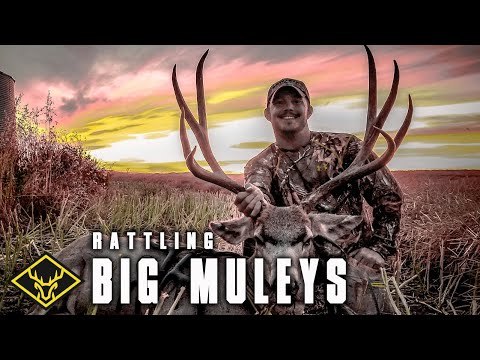
Fair Activity - An Arts and Humanities Point of view on Venison.
Why doesn’t the British community eat Substantially venison? I’ve questioned this question to plenty of folks and also the replies are identical: venison is expensive; a food stuff of Michelin star dining places or for all those posh folks who experience throughout the landscape shooting deer (and hunting is really a cruel blood Activity – run Bambi, run!).
For several years I had been of the opinion way too And that i however battle with the idea of killing animals, Most likely unsurprisingly as I’m a left-wing vegetarian who is against animal cruelty and social inequality. Peculiar then, that I now find myself Performing pretty carefully with deer stalkers to actively market the intake of wild venison.
I use the time period ‘wild’ to denote deer that live freely within the landscape. Under this definition I involve nonfarmed park deer; those are still left to their very own equipment and therefore are not presented supplementary feed.
So, what caused this monumental U-switch in my beliefs? It happened progressively as my expertise in deer administration, both previous and current, amplified. For over a decade I happen to be looking into the organic and cultural background from the fallow deer, Latin title Dama dama dama (or, fairly, that spotty one that the thing is during the deer parks of stately residences).
This species of deer is attention-grabbing since it is not really indigenous to Britain or northern Europe – it’s from Turkey. All through the previous couple of millennia fallow deer been transported world wide by people today and our new AHRC-funded investigate challenge Dama Global: fallow deer and European Modern society 6000 BC – Advert 1600’ is examining the timing and situation in their spread.
We now have by now proven that fallow deer were initially launched to Britain about two thousand decades ago, with the Romans who liked searching unique quarry. The collapse in the Roman Empire, however, noticed a decline during the Roman’s looking society and our evidence suggests that fallow deer also became domestically extinct.
It wasn't right until the Norman invasion of 1066 that fallow deer had been re-launched to Britain (possibly in the Norman kingdom of Sicily) and, this time, they have been here to remain. In fact, our genetic https://onegeology.org/news/item.cfm?id=4467 research advise that all fashionable fallow deer populations in northern Europe descend from animals introduced to Britain from the Normans.
youtube
The Normans were being probably essentially the most passionate hunters that Britain has ever found searching was the ‘pop culture’ of time, about-hunting resulting in the virtual extinction from the roe deer. Fallow deer aided to plug the venison-hole remaining by declining roe populations and, by the tip of your medieval time period thousands of deer parks have been arrange across Britain, Each individual housing a huge selection of fallow deer and scaled-down quantities of red deer.
Deer hunting as well as the usage of venison had been central to medieval Culture, assisting to build Group as people today arrived alongside one another to assist attain and take in the venison from only one animal.
Just like all well known tradition, having said that, looking fell outside of trend. People identified other mechanisms for socializing and, since the style for venison dwindled, deer parks fell into disrepair as well as their inmates escaped. But even though the hunters went absent, the deer did not – within the absence of human as well as other normal predators (people today had effectively exterminated all British bears, wolves and lynx by at the least the 13th century) the deer bred, and bred, and bred…
As outlined by modern govt files deer at the moment are extra various than at any time in the last thousand yrs.2 Burgeoning populations of pink, roe and fallow deer happen to be joined by escalating quantities of exotic species (namely the sika, muntjac and Chinese drinking water deer) imported inside the 19th and twentieth centuries.
How lovely to have this kind of a big amount and range of deer in Britain! Properly… it's possible…Deer are undoubtedly lovely things which boost the seem in the landscape and, in moderate numbers, Use a good impact on the atmosphere.
However, in large quantities, they may have the possible to accomplish plenty of environmental injury – ravaging crops, retarding woodland regeneration and influencing negatively on biodiversity. Nor are massive populations superior to the effectively-currently being in the deer by themselves – a lot of animals in one location or park will lead to starvation, ailment and sickness.
Then We've street targeted visitors incidents, with an approximated 40-70thousand deer killed around the roadways each year. Collisions with deer also carry human casualties: in excess of 1750 targeted visitors collisions involving deer are actually noted leading to human injuries in the ten many years 2001-2010, such as forty two mishaps resulting in human.3 In sum, during the absence of human Command contemporary United kingdom deer populations are unsustainable environmentally and, arguably, unethical when it comes to animal welfare.
So, what on earth is for being accomplished? Our exploration reveals that modern deer management troubles really are a legacy of the medieval time period, so Possibly we want to search for medieval methods. We feel that in lieu of currently being a ‘difficulty’ deer are a wonderful resource, if only we could reconnect With all the thought of venison.
At a time when locally sourced, seasonal, healthful and ethical foods are at the very best of buyers’ wish-lists, wild venison ticks every single box – wild deer, or the ones that haven't been supplementary fed, present exceptionally lean venison 4 and, most importantly, you don’t get a more totally free-range and ‘satisfied’ meat than wild venison!
However, the information isn't having by - the public’s abhorrence of animal killing, and ‘looking’, is just too powerful. Obviously, community attitudes don’t prevent deer culling, it just implies that most of the venison made in Britain is exported. Like that wasn’t poor ample, the tiny venison available in British supermarkets is from farmed deer, Considerably of which happens to be IMPORTED – it’s a crazy planet around!
This is when our arts and humanities investigate have gotten vital – We have now the opportunity to serve up this tough challenge in additional participating and palatable way. To accomplish this, We've got introduced the Honest Sport Initiative, an educational campaign staffed by archaeologists and deer stalkers, to elucidate the background of Britain’s fallow deer and the many benefits of consuming their venison.
Our technique is arms on. Soon after an introductory lecture we get the job done as a bunch, pursuing the instructions published in medieval looking manuals, to ‘unmake’ (pores and skin and butcher) an entire fallow deer. Every person receives involved in the process, Finding out various critical classes encompassing archaeology, anatomy, animal welfare, environmental ethics, foodstuff protection, healthier feeding on and record.
Our purpose is to democratize venison and make it accessible to all, for example these internal-city college young children who expended the day dealing with us to make a delicious food for his or her mothers and fathers. Opposite to well known perception, venison is much cheaper than almost every other meat, if obtained direct from your stalker. It is usually healthier – what much better solution for our kids’s school dinners? And what better way to help you regulate Britain’s deer populations?
The Truthful Match Initiative aims to roll-out across the country, linking deer stalkers to educational establishments, and finding neighborhood venison on to school menus.
#AHRC Fallow Deer Project#D.E.E.R Project#Dama International (Fallow Deer)#Dama International Fallow Deer and European Society 6000 BC - AD 1600#Dama International Fallow Deer Project#Deer Project#DeerProject.org#Fallow Deer#Fallow Deer Project#fallow-deer-project.net#The D.E.E.R Project#The Deer Project#The Fallow Deer Project#www.deerproject.org
0 notes
Text
How Did We Get Here? The History of AHRC Fallow Deer Project Told Through Tweets

Fair Game - An Arts and Humanities Standpoint on Venison.
Why doesn’t the British public take in Considerably venison? I’ve asked this problem to a lot of folks as well as the replies are comparable: venison is pricey; a meals of Michelin star eating places or for the people posh people that ride round the landscape taking pictures deer (and looking is actually a cruel blood sport – run Bambi, operate!).
For a long time I had been of this opinion way too and I nonetheless struggle with the idea of killing animals, Maybe unsurprisingly as I’m a still left-wing vegetarian who is against animal cruelty and social inequality. Odd then, that I now come across myself Doing work extremely closely with deer stalkers to actively encourage the intake of wild venison.
I use the expression ‘wild’ to denote deer that Stay freely throughout the landscape. Beneath this definition I consist of nonfarmed park deer; All those are still left to their unique products and they are not supplied supplementary feed.
So, what triggered this monumental U-change in my beliefs? It transpired steadily as my familiarity with deer management, both equally past and existing, elevated. For over ten years I are already investigating the normal and cultural heritage from the fallow deer, Latin name Dama dama dama (or, instead, that spotty one that the thing is during the deer parks of stately properties).
This species of deer is fascinating since it is not native to Britain or northern Europe – it’s from Turkey. During the previous couple of millennia fallow deer been transported world wide by folks and our new AHRC-funded investigation task Dama Worldwide: fallow deer and European society 6000 BC – AD 1600’ is analyzing the timing and conditions in their spread.
We've got presently demonstrated that fallow deer ended up 1st introduced to Britain about two thousand a long time back, because of the Romans who loved hunting unique quarry. The collapse on the Roman Empire, even so, saw a decrease during the Roman’s searching society and our proof implies that fallow deer also grew to become regionally extinct.
It was not until eventually the Norman invasion of 1066 that fallow deer have been re-introduced to Britain (probably through the Norman kingdom of Sicily) and, this time, they have been right here to remain. Without a doubt, our genetic experiments counsel that all modern fallow deer populations in northern Europe descend from animals introduced to Britain with the Normans.
The Normans had been in all probability one of the most passionate hunters that Britain has ever witnessed searching was the ‘popular culture’ of some time, over-hunting resulting in the virtual extinction of the roe deer. Fallow deer assisted to plug the venison-gap left by declining roe populations and, by the top with the medieval period of time Many deer parks were set up across Britain, each housing a huge selection of fallow deer and lesser figures of red deer.
youtube
Deer searching plus the consumption of venison have been central to medieval Culture, assisting to make Group as individuals came together that will help attain and eat the venison from only one animal.
As with all popular tradition, however, searching fell out of vogue. People discovered other mechanisms for socializing and, since the style for venison dwindled, deer parks fell into disrepair as well as their inmates escaped. But whilst the hunters went away, the deer didn't – within the absence of human together with other purely natural predators (persons had effectively exterminated all British bears, wolves and lynx by at least the 13th century) the deer bred, and bred, and bred…
As outlined by latest governing administration paperwork deer at the moment are far more a lot of than Anytime in the last thousand a long time.2 Burgeoning populations of red, roe and fallow deer are actually joined by escalating quantities of unique species (specifically the sika, muntjac and Chinese h2o deer) imported while in the nineteenth and twentieth generations.
How lovely to get this sort of a considerable number and number of deer in Britain! Perfectly… maybe…Deer are definitely attractive things that enhance the seem with the landscape and, in reasonable quantities, Use a constructive effect on the ecosystem.
Even so, in big numbers, they've the likely to complete a lot of environmental damage – ravaging crops, retarding woodland regeneration and influencing negatively on biodiversity. Nor are massive populations fantastic for the well-being from the deer on their own – a lot of animals in one spot or park will cause starvation, sickness and health issues.
Then We've street visitors incidents, with the believed 40-70thousand deer killed on the roads each year. Collisions with deer also deliver human casualties: over 1750 traffic collisions involving deer are actually noted creating human injuries from the ten yrs 2001-2010, such as forty two incidents bringing about human.three In sum, inside the absence of human Management contemporary British isles deer populations are unsustainable environmentally and, arguably, unethical regarding animal welfare.
So, what is to generally be finished? Our investigation shows that fashionable deer management challenges absolutely are a legacy of the medieval period of time, so Most likely we'd like to search for medieval alternatives. We believe that rather then getting a ‘problem’ deer are an excellent useful resource, if only we could reconnect Along with the idea of venison.
At a time when domestically sourced, seasonal, healthful and ethical foods are at the very best of individuals’ would like-lists, wild venison ticks each and every box – wild deer, or those that have not been supplementary fed, give exceptionally lean venison 4 and, most importantly, you don’t get a far more no cost-assortment and ‘happy’ meat than wild venison!
Regrettably, the information https://www.cardiff.ac.uk/cy/people/view/73045-madgwick-richard is not getting by means of - the public’s abhorrence of animal killing, and ‘hunting’, is too potent. Needless to say, public attitudes don’t stop deer culling, it just means that many of the venison created in Britain is exported. Like that wasn’t lousy plenty of, the minor venison offered in British supermarkets is from farmed deer, Considerably of which happens to be IMPORTED – it’s a outrageous earth around!
This is when our arts and humanities exploration have gotten crucial – Now we have the chance to serve up this tricky situation in more engaging and palatable way. To do this, Now we have launched the Fair Game Initiative, an educational marketing campaign staffed by archaeologists and deer stalkers, to clarify the background of Britain’s fallow deer and the many benefits of eating their venison.
Our solution is arms on. Immediately after an introductory lecture we work as a gaggle, subsequent the Recommendations prepared in medieval searching manuals, to ‘unmake’ (pores and skin and butcher) a whole fallow deer. Absolutely everyone receives involved with the procedure, Finding out a variety of vital classes encompassing archaeology, anatomy, animal welfare, environmental ethics, meals safety, healthy consuming and historical past.
Our aim is always to democratize venison and allow it to be accessible to all, like these interior-metropolis university little ones who invested the working day dealing with us to produce a delicious food for their parents. Contrary to preferred belief, venison is much more affordable than every other meat, if received direct with the stalker. It is usually more healthy – what greater merchandise for our youngsters’s faculty dinners? And what greater way to assist manage Britain’s deer populations?
The Honest Activity Initiative aims to roll-out across the country, linking deer stalkers to educational institutions, and acquiring community venison on to university menus.
#AHRC Fallow Deer Project#D.E.E.R Project#Dama International (Fallow Deer)#Dama International Fallow Deer and European Society 6000 BC - AD 1600#Dama International Fallow Deer Project#Deer Project#DeerProject.org#Fallow Deer#Fallow Deer Project#fallow-deer-project.net#The D.E.E.R Project#The Deer Project#The Fallow Deer Project#www.deerproject.org
0 notes
Photo


Yesterday afternoon
377 notes
·
View notes
Text
The sun rises, and so does the craftswoman. Today begins her most ambitious project. It took many nights to collect the resources. Clay from the Euphrates. Bones from the Ibexes and Gazelles, even a Fallow Deer’s antlers. And so she sets to work, sculpting her son. Tall, as high as she can reach, even standing on a wicker basket. For years, she pours his life, her soul, everything she can, into this simple statue, even as she withers away, hair becoming matted and grey, she gives him claws to defend himself, and long legs to run. But she is getting old, and no longer can reach past her son’s chest. She feels her joints ache with each passing day, and finally, she lets herself rest, head against the knee of her finest work..and as she falls asleep for the last time at the foot of Winterloft, he finally moves to mourn a mother he never knew, and begin his lengthy life.
3 notes
·
View notes
Audio
Canto I, Part 4 (There Luthien the lissom maid...) - The Lay of Leithian
Words are by J. R. R. Tolkien, music is original!
(previous section)
This is the fourth and final section of the first Canto! This section was fun to write- from the light-hearted bits to hopefully evoke the elven piping (to a little self-indulgent throwback to my setting of ‘The Lay of Luthien”) to bringing it back to the home theme!
Thank you so much for listening, and thanks especially to those who reblog- I really do appreciate it!
There Lúthien the lissom maid
would dance in dell and grassy glade,
and music merrily, thin and clear,
went down the ways, more fair than ear
of mortal Men at feast hath heard,
and fairer than the song of bird.
When leaves were long and grass was green
then Dairon with his fingers lean,
as daylight melted into shade,
a wandering music sweetly made,
enchanted fluting, warbling wild,
for love of Thingol's elfin child.
There bow was bent and shaft was sped,
the fallow deer as phantoms fled,
and horses proud with braided mane,
with shining bit and silver rein,
went fleeting by on moonlit night,
as swallows arrow-swift in flight;
a blowing and a sound of bells,
a hidden hunt in hollow dells.
There songs were made and things of gold,
and silver cups and jewels untold,
and the endless years of Faëry land
rolled over far Beleriand,
until a day beneath the sun,
when many marvels were begun.
(previous parts // more about this project)
#the lord of the rings#the lay of leithian#the lays of beleriand#the silmarillion#luthien#tolkien#J. R. R. Tolkien#middle earth#songs from the lord of the rings#original song#my music#also that linked recording of the lay of luthien is 7 years old yikes#i was as i ever was and am: earnest and messy
39 notes
·
View notes
Text
Dyrham Park
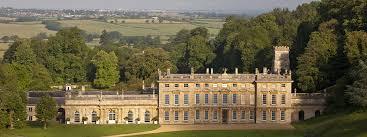


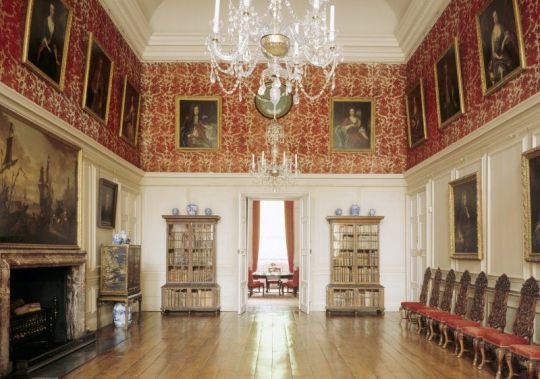

Dyrham Park is a baroque mansion located near the village of Dyrham in South Gloucestershire, England. The castle was built upon a previous manor by government administrator William Blathwayt from 1691 to 1704 on the western edge of the Cotswolds. Due to Blathwayt’s well-paying occupation in dealing with the colonies, many contents in the house have come from his career, including a tea table from Java, gilt leather panels from Amsterdam, many European books, Dutch Delftware, paintings by Dutch masters, and more. In the mid 19th century, Colonel George Blathwayts renovated the kitchens and updated the manor to save it from decline. In the 1950s, Dyrham was purchased for the nation through the Land Fund and used as a memorial for those who perished in WWII. Currently, the estate is owned by the National Trust. Since the 20th century, improvements have been made to the gardens, the roofs have been repaired, and additional items for the collections have been purchased. The mansion sits on 270 acres with a 15 stable bay block (now used as the tearoom), forests, a wildflower orchard, ponds, statuary, a herd of fallow deer, and a coved passageway leading to 13th century St. Peter’s parish church. The National Trust does not own the church, but many of Dyrham’s past owners have tombs at the church. Dyrham Park’s interior boasts an orangery, a family parlor, servants quarters, an Italianate double staircase, wood paneling’s, Delftware tiles, and many more artifacts and furniture from Blathwayt’s journeys. The parkland, garden, and tearoom at Dyrham Park are open to the public. Unfortunately, the house is closed at this time. Currently, there is a £10 million project to restore Dyrham Park.
4 notes
·
View notes
Link
The Naga tribes inhabit the hills in the northwestern corner of Myanmar and northeast India. They had long been isolated from outside culture, dwelling in independent village republics. This protected them from the land grabs that have been so prevalent in the rest of Myanmar.
For centuries, tribes could sustain themselves by following their own customary tenure system, deciding who can use and manage different resources. Their traditional rules have guided them in the effective management of the properties that belong to separate or multiple households, clans, villages and whole tribes.
However, their rights and culture have been recently undermined by amendments to the Myanmar’s Law on Vacant, Fallow and Virgin (VFV) Land. The essence of the dispute lies in the issue of shifting arable lands, called jhum or dengyo.
The law categorizes these lands as VFV and thus makes them particularly susceptible to expropriation. Another law, on farmlands, does not recognize this form of cultivation, leaving forest-based Naga tribes at peril of losing all claims to the lands and forests that they manage rotationally.
“We were not sure if we can retain access to the forest in the future,” says Yo Ela, a tribesman from Somra, on the Myanmar-India border. “We had been cultivating the forest since generations but suddenly the government claimed rights to it. We were forced to revise our rules and cut the timber down for their projects.”
The forests in Somra used to be a combination of hardwood and pine trees, with rice, vegetables, fruits and herbs sown on the hillsides. The arrival of the forest department, with its land management system, undermines the sustainable forest management that the tribes practice in accordance with their customary system, they say.
“There is no deer or hornbill anymore in the forest,” Yo Ela says, adding that the uncertainty over whether the government will make tribal forest management illegal has left his community in despair.
Expropriation of community-managed forests governed under customary arrangements can lead to dire consequences, opening the door to the looting of resources by powerful newcomers. Myanmar’s previous long-lived military regime treated community properties as being at its own disposal. After the country’s transition to a semi-democracy in 2015, there was hope for change, both among the Bamar majority and ethnic minorities. Among the reforms, the persecution of minorities for their Christian beliefs in this Buddhist-majority country ended, as did their exploitation for army projects.
“In the past, we couldn’t object to the army order; otherwise we would be killed on the spot,” says Din Pe, a member of the Dan Gon subtribe.
15 notes
·
View notes
Text
Off the radar
Hi all, apologies for the lack of blog posts in the last few months. I've become a little disillusioned with social media lately and that's meant I haven't been posting content as frequently. I'm not sure if that'll change too much, algorithms and the like are taking a bit of the joy out of it. When you post something and it gets half the engagement a similar post was getting a couple of years ago, despite having more than twice the number of followers, it's a bit discouraging.
Anyway, here's what I have been up to since summer.
Patreon. I've continued to work on my Patreon project - Weird Field World. There's a bit of info about it here. I'm really enjoying fleshing out the world, adding background, history, little stories and characters. The engagement with my supporters there is great, and it's very energising to have people to discuss the project with. You can support me here.
Inktober. I failed to finish Inktober this year. I think I just ran out of steam and enthusiasm for the project after a couple of weeks. My plan was to draw a series of little building based, loosely, on the play Under Milk Wood, by Dylan Thomas. I started off OK, but there wasn't, perhaps, quite enough to go on for a whole month of building drawings. I think I managed 14 or 15 in the end. I was reasonably happy with most of them, and I might add one or two more at some point. A bunch of the illustrations are available to buy, so I'll add a separate post soon.
Illustration work. This year has been a disappointment compared to last year. Working on a couple of books, plus work in a couple of magazines, some t-shirt designs and a little concept art work meant that 2018 was by far my best year for paid illustration work. 2019 by comparison has been awful. I've had a steady flow of private commissions this year, but no major commercial work at all. I've worked on concept art for a couple of clients, but both of those projects fizzled out due to publishing or financial issues. It has made me realise that I need to be much more proactive in seeking work, so in the last few weeks I've been getting organised. The year has ended brighter, a few little commercial projects have come in over the last two weeks, and I've had enquiries about a couple more.
Digital Illustration. A year or so ago I bought myself an iPad Pro and Apple Pencil, hoping to dive in to the world of digital illustration. One of the main reasons for doing so was to be able to produce super clean linework that would reproduce well in print. I have found working digitally a huge, and difficult, leap. The simple act of drawing on something other than paper, even with a matt screen protector on the iPad, has taken a huge amount of time to get used to - and there were many times when I thought it simply wasn't going to be possible for me. The turning point was a suggestion from Rob McCallum on Twitter that I simply give up working on paper for a while, and only sketch on the iPad. It might seem like an obvious solution, but to draw digitally, and not get the results you want, for even a day was quite a task for me. Gradually, over the course of a couple of weeks things began to feel more natural. I got used to the feel of the stylus on glass, to the way digital lines worked, how to tweak brush settings to suit my way of drawing. Now, although I still have huge amounts to learn, I really do feel comfortable working on the iPad. I even enjoy it. Part of that is down to just how good the iPad and Pencil are, and how great a piece of software Procreate is. Together they are really quite formidable. Adobe and Wacom should be worried, particularly with the lacklustre release of Photoshop for iPad.
Parklife. I've continued to get out for walks as often as I can, if not as often as I'd like, in Bushy Park. Getting out in to the fresh air, and out in the open is hugely important for me, particularly if I've been stuck at my desk for a few days. I still get a thrill from seeing the variety of wildlife in the park - Red and Fallow deer, woodpeckers, kingfishers, and a huge number of other different bird species. I can't recommend getting out in to the countryside enough. Make the effort if you can, you won't regret it.
Reading. I've struggled to find moments to read this year. Not commuting in to London at all has been one factor - the only good thing about a three hour commute each day is that it gives you three guilt-free hours to read each day. Apart from that I just don't seem to have been in the right frame of mind. Perhaps it's a feeling of guilt - spending time reading when ideally I'd be working - even if I haven't had the work to do this year. I've tried to put things right in the last month or so. I read and thoroughly enjoyed Gareth Powell's sequel to Embers of War - Fleet of Knives. And Ann Leckie's Provenance, set in the Imperial Radch universe she introduced us to in Ancillary Justice, was a great read. Currently I'm reading Wilding by the appropriately named Isabella Tree. It's the story of how she and her (affluent) family set about rewilding large parts of their 1400 acre estate in Sussex.
That's it for now. I'll do my best to post more often. Do let me know if there's anything in particular you'd like me to write about.
You can find prints of my work here
I also have a Patreon page
And you can find more of my work online…
Twitter
Instagram
Facebook
Blog
26 notes
·
View notes